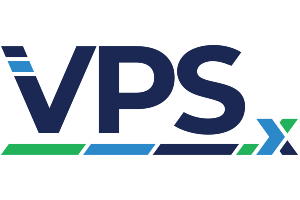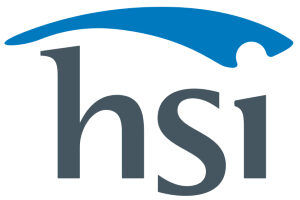Safety is a moving target that demands constant vigilance, especially when it comes to high-risk industries. Whether managing a pipeline, power grid or chemical plant, knowing if the workforce is qualified right now is critical. Technology-driven, real-time evaluation methods are transforming compliance by addressing the limits of traditional approaches.
Today, they’re not just innovative — they’re essential. These tools can help organizations instantly validate skills, ensure regulatory adherence and respond to evolving risks as they arise — ultimately building safer, smarter workforces. As this shift takes place, it’s proving to be transformational in the ways companies think about workforce readiness, turning compliance from a static obligation into a dynamic advantage.
Transforming Compliance from Static Records to Dynamic Readiness
In many organizations, compliance remains a static concept often found trapped in dense PDFs, hidden within complex spreadsheets, or even gathering dust in long-forgotten filing cabinets. While these outdated methods may technically satisfy regulatory requirements, they fail to provide insight into who is truly prepared to do the work safely and effectively.
Fortunately, advancements in technology are reshaping this outdated model, transforming compliance from a passive record-keeping exercise into an active, dynamic system that empowers the entire workforce. Modern tools combine operator qualification (OQ) systems with mobile certification tracking and digital field evaluations — all linked to real-time worker credentials like training records, certifications and job qualifications.
An OQ system is a software platform used to manage and verify worker qualifications in regulated industries. It stores data on training, certifications and evaluations, ensuring that workers are compliant and qualified to perform safety-sensitive tasks. While the system itself is software-based, it is often accessed through mobile tools or handheld devices in the field — enabling supervisors to check credentials and make informed decisions in real time.
This dynamic approach to verifying work readiness can not only improve safety and compliance outcomes but also support a culture of continuous learning and accountability across the workforce. Here are three best practices to integrating OQ systems into your modern technology stack, and how they can enhance your compliance management.
Credential Checks for Safer Access.
Although the importance of real-time information cannot be overstated, conducting qualification checks in the field can be time-consuming, hindering productivity. Mobile tools can now enable instant verification of worker identity and qualifications at the jobsite entrance. Upon arrival, a worker can simply scan their badge at a gate-mounted device, mobile tablet or handheld scanner operated by a supervisor to be identified and cleared by the system within seconds. This can provide a fast, secure and efficient way to maintain site safety without disrupting the workflow.
Digital Field Evaluations: Done Right and On Schedule.
Real-time electronic evaluations are rapidly replacing paper forms, streamlining contractor compliance. Whether used once during onboarding or for recurring qualification checks, mobile evaluations submitted at the point of validation, and securely stored in the cloud, offer greater efficiency. For example, a supervisor in the field can complete a safety walk-through checklist or task-specific skills assessment on a tablet, then submit it instantly through a secure app. These timestamped, secure records are audit-ready, reducing the risk of lost logs, eliminating manual scanning and easing the burden of catch-up audits.
Verifying Worker Readiness Through LMS Integration.
In hazardous work environments, ongoing verification of worker qualifications is essential. A certificate from last month doesn’t guarantee current competency. To ensure every worker remains current and truly competent, learning leaders can use a learning management system (LMS) to deploy targeted reinforcement training with built-in quizzes or assessments.
These modules can be triggered based on data pulled from connected OQ systems — such as expiring qualifications, upcoming job assignments or failed field evaluations. Before returning to the floor or accepting a new role, workers complete refresher content and prove their knowledge through real-time assessments. Results are instantly recorded, keeping qualification records up to date and ensuring only fully compliant individuals are cleared for work.
Why Real-Time Matters for Learning Leaders
As a learning leader, your role goes beyond delivering training. You’re responsible for making sure employees are prepared, compliant and safe. Real-time tools help reinforce that connection between learning and on-the-job readiness. Here’s how:
- Immediate risk mitigation. Real-time checks ensure unqualified workers aren’t assigned to safety-sensitive tasks.
- Clear compliance tracking. Digital audit trails simplify documentation and make it easier to meet OQ and regulatory standards.
- Stronger decision-making. Up-to-date qualification data allows you to support operations in assigning the right people to the right roles.
- Improved efficiency. Mobile access to training records reduces delays, minimizes downtime, and enables quick response when retraining is needed.
Tips for Learning Leaders: Integrating Real-Time Evaluation
Looking to bring real-time evaluation into your learning and compliance strategy? Here’s how to get started:
- Assess your current training and evaluation systems. Identify gaps where training data is delayed, disconnected, or hard to access in the field.
- Prioritize high-risk tasks. Begin with operator qualification (OQ) areas that carry the greatest safety or compliance impact.
- Go mobile. Move away from paper-based evaluations and adopt mobile-friendly tools that can be used directly on the jobsite.
- Connect training to qualification. Link LMS completions with real-time evaluation tools, so workers can prove competency where it counts.
- Track outcomes and adjust. Monitor trends like non-compliance, incident rates, and evaluation timelines to continuously improve the program and show return on investment (ROI).
In high-risk work environments, where every second counts and safety is non-negotiable, real-time evaluation is a strategic imperative. By shifting from static paperwork to dynamic, tech-driven systems, organizations can confidently verify qualifications, proactively mitigate risk and cultivate a culture of continuous readiness and accountability.
From gate-level credential checks to continuous learning and real-time field evaluations, each strategy works together to support a fully compliant workforce. By integrating OQ systems into your company’s tech stack, you can shift away from reactive box-checking and toward a proactive approach, where compliance is not just a requirement, but a competitive advantage.


